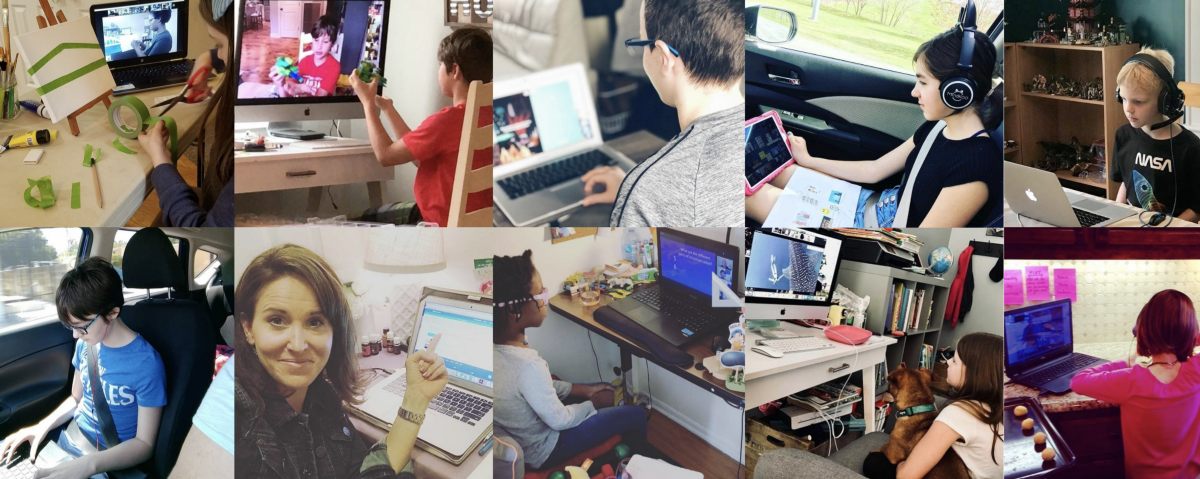by Jen Wu, Venture Partner at Reach Capital
My level of anxiety has risen steadily as the coronavirus crisis has unfolded in China, around the world, and now in my local community. I worry about my 87-year-old father who struggles fighting a common cold. I stare at empty shelves in Costco and Trader Joe’s. I wonder how our daily lives will be affected by this marathon through uncharted territory that we’ve only just begun. With my limited understanding about this pandemic, I can’t help but feel that we as a country are woefully unprepared for what’s about to hit us.
That said, as a former K-12 educator and current edtech investor, I do feel a sense of comfort knowing that if schools are closed — as they have been in many parts of the world and now even in the US — that the progress schools have made adopting technology in recent years will help soften the blow. Don’t get me wrong. Closing schools will be hugely disruptive for students, families, and educators. However, if schools do close for an extended time, with the help of widely available and adopted technology tools, learning can continue.
Schools are already starting to plan for how to deal with the virus. The U.S. Centers for Disease Control (CDC) suggests that parents ask their children’s schools about “plans for teleschool.” What might teleschool look like? Perhaps not as unfamiliar as it sounds. For teachers, students, and families accustomed to using edtech tools, a few aspects of school may feel like business as usual. If you’re not familiar with many edtech tools, check out the list below for learning needs that these tools can address and examples of how popular tools can be used to support remote learning. You can sign up for free accounts for most of these tools, and many companies are waiving fees during school closures. Note that the examples listed below are just a small sample. For teachers and parents looking for high-quality, grade appropriate resources, check out edtech reviews by Common Sense Media.
Business as usual … and then some!
Ongoing communication. Most schools and parents have well-established communication channels over web, email, and text. With solutions such as Remind and School Messenger, schools can continue to stay in touch with parents throughout school closures, and parents have a familiar access line to teachers and administrators.
Learning management. Many teachers and students already use learning management systems (LMS) such as Google Classroom and Canvas to assign, turn in, and give feedback on assignments. With school closures, teachers can even post videos of themselves explaining assignments or providing students information needed to complete them. Students will likely appreciate seeing and hearing their teachers’ familiar faces and voices!
Online learning resources. Over the past few years, schools across the U.S. have been transitioning from print to digital learning materials. Over half of new instructional materials purchased by schools are now in digital format. Accessing learning resources online is second nature to most students. Math learning can continue uninterrupted for students who use self-paced programs like ST Math, Dreambox, and eSpark in class. Students can continue to enjoy books they love on Epic and can continue to complete assignments with familiar tools such as Desmos, Newsela and NoRedInk.
Teachers can also design learning experiences that students can complete independently at home. With Nearpod, teachers can create lessons with embedded multimedia content and assessments. Nearpod VR takes students on virtual field trips, so students can be immersed in another part of the world despite being homebound. Students can also do hands-on science activities with materials readily found in their homes with the help of Mystery Science.
Capturing and sharing learning. Widely used tools such as ClassDojo and SeeSaw are typically used for teachers and students to capture and share learning moments from the classroom with families. These tools would work just as well in reverse: for students and families to share learning being done at home with teachers and their classmates.
Creating classroom community. What will probably be missed the most during extended school closures is the special classroom community that develops with in-person interactions and shared experiences. While this communal feeling is impossible to recreate remotely, there are tools that can nurture some of the same spirit. Flipgrid allows students to record and share videos of themselves with others in the class. Padlet allows students to express themselves visually using practically any media type and to comment on and contribute to their classmates’ work.
Teaching live, remotely. While teachers and students may be familiar with using live video in their personal lives with apps like Facetime and WhatsApp, the technology has not been used widely in school settings in the U.S. This ubiquitous technology makes the concept of “teleschool” a practical reality. Tens of thousands of families already take advantage of Outschool, a marketplace of live, small group classes with teachers and students from all over the country.
For teachers who want to keep teaching when schools are closed, Google Hangouts allows up to 25 people in an organization to attend a video call. For higher quality video, teachers can host up to 40-minute “meetings” for up to 100 attendees with a free Zoom account. These video conferencing tools work well for whole-class lectures, as well as small group lessons, and 1:1s.
(Update to post: Given Outschool’s experience with facilitating remote classes it is offering free training to teachers to help them prepare for school closures and on best practices for teaching online.)
While learning remotely over live video is a major breakthrough, video may not always be the best medium for students. GradeSlam enables schools to offer 24/7 homework help and essay review by trained teachers to their students over chat-based messaging. Working with districts across the U.S., GradeSlam discovered that students much prefer reaching out for homework help over text than video. I suspect we’ll learn a number of lessons about how to best support today’s students through this process.
Equitable access
While technology enables many possibilities for remote learning, we must address the issue of equitable access to these opportunities for all students. Parents who must work away from home through the crisis cannot supervise and support their children’s learning. Home access to devices and broadband internet access remains far from ubiquitous. Perhaps this looming crisis will be the driving force we need to actively address pervasive inequities that exist in our communities. Schools are already preparing devices that can be sent home with students, though this heroic effort may still not be enough. It’s time for community members — including schools, tech companies, internet providers, and local businesses — to come together and enable learning for all students in the community a reality.


